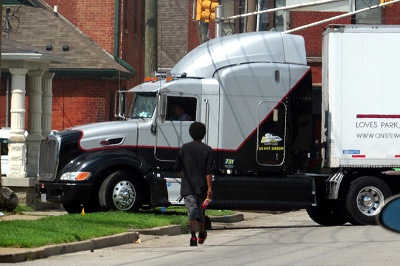Trucker Braking Practices That Prevent Catastrophes

Downhill braking presents a challenge for truckers. A tractor trailer driver who overuses the brakes on a long downhill slope can end up with no brakes and a runaway truck. This creates the risk of a deadly truck collision for other motorists.
What Makes Downhill Braking So Difficult?
Brakes on a big rig are different from the brakes on passenger vehicle. On a large commercial truck, braking is accomplished through a compressor that feeds air into pressure tanks, which in turn put pressure on the brakes. Overuse of a truck’s brakes on a downhill descent can drain the air from the compressor faster than it can be replenished. With no air pressure, the truck’s brakes will not work.
Why Is it Important for Trucking Companies to Hire Experienced Drivers?
Operating a big rig requires more skill than driving a passenger vehicle. Truck drivers who lack the necessary skills put others on the road at risk. Trucking companies have a responsibility to properly screen and train the drivers they hire, under Federal Motor Carrier Safety Administration (FMCSA) regulations.
Improper braking that causes brake failure is just one example of how inexperienced truckers can put other lives in danger. With the current national shortage of drivers, trucking companies are hiring more inexperienced drivers. Motivated by profit, these companies may also put pressure on their drivers, requiring them to meet unrealistic deadlines or work for long hours, which can lead to driver fatigue, improper braking, and other driver errors that result in catastrophic truck accidents.
How Should Truck Drivers Brake on a Downhill Slope?
When descending a steep slope, truck drivers should begin at a slow speed and shift into low gear to maintain that slow speed while traveling downhill. Using the transmission to slow down the truck can help the driver avoid overuse of the brakes. On a steep downgrade, the brakes should only be used to supplement the braking effect of the transmission. When braking is necessary, the proper technique is:
- Determine a safe speed (such as 50 mph) at which to travel down the hill.
- Apply the brakes just long enough for the truck to definitely slow down (approximately three seconds).
- Release the brakes when the truck’s speed has reached approximately 5 mph below the safe speed.
- Repeat braking as above when the truck is back up to the safe speed.
For example, with a safe speed of 50 mph, the driver should not brake until the truck reaches that speed, at which point the brakes should be applied until the truck slows down to 45 mph, then released. This technique should be repeated as necessary until the truck arrives at the bottom of the downgrade.
How Can a Lawyer Help After a Truck Accident Caused by Improper Braking?
If you have been seriously injured in a Campbell County truck accident, your best chance of recovering full compensation is to have an experienced Gillette personal injury attorney representing you. Truck accidents are complex, high-stakes cases, involving federal regulations and multiple potentially responsible parties. It is important to act quickly so your lawyer can take action to prevent critical evidence contained in the truck’s black box from being destroyed.
At Steven Titus & Associates, P.C., we can help you navigate the complexities of a civil lawsuit. Our seasoned trial attorneys are always available, down-to-earth, and have an impressive win-loss record in the courtroom.
We offer a free case strategy session and work on a contingency fee basis. Call us today at (307) 257-7800 if you were hurt in a truck wreck that may have been caused by improper downhill braking.

Your FREE Case Strategy Session
On All Injury and Criminal Cases
Contact our office right now to speak to
someone who wants to help you.